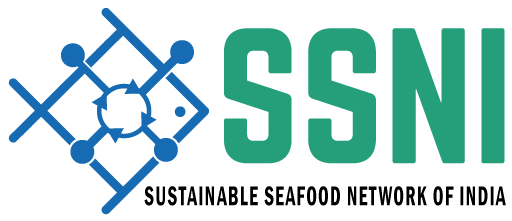PARAPENAEOPSIS STYLIFERA
Name of fishery Karrikadi fishery (trawl)
Target species Parapenaeopsis stylifera
Location India – south west coast (Kollam)
Fishing area FAO 51
Fishery history The fishery has been in operation since the introduction of trawl in Neendakara-Sakthkulangara. (From early 70’s single day and mid 80’s multiday trawling).
Stock biology Sexes are separate (petasma in male and thelycum in female). Mating is external. It spawns throughout the year with spawning peaks. Does not have an estuarine phase, but is believed to migrate within the sea from coastal to deeper waters during July-August. Shoreward migration is during October as after the southwest monsoon they are caught from this month onwards. It is found in large shoals in the shallow waters and is an important species in inshore and offshore fishery.
Data on target species Yes there is stock assessment, catch per unit effort data, landing data, biological data for this species. Data from Neendakara is available from 1983 onwards. Scientists assisted by technical personnel collect, manages and stores the data. Data is collected by stratified random sampling by visiting the harbour fortnightly every month.
Fishing activities Gear trawl, single day operation, both sexes caught, throughout the year earlier up to 1986, after that with the introduction of trawl ban, fishing does not happen during June 15th to 31st July.
Volume caught

Ecosystem impacts Since the gear operated is trawl, the bottom habitat is affected. Bycatch like molluscs, squilla and fishes are also caught.
Threats to sustainability
Fishers Both men and women are involved. Men go for fishing and women are vendors.
Management agencies Department of Fisheries, Government of Kerala.
Management regime The only management measure for the fishery is the trawl ban imposed by the Government for 45 days during the south west monsoon and the recent Government of Kerala Ordinance on Minimum Legal Size (MLS).
Management compliance Yes they do comply with the trawl ban.
Community participation in management
Processing and marketing information The species is exported in different forms: Block frozen and Individual quick frozen. It is exported to European Union including Netherlands, Spain, Japan, Vietnam, USA, China Malaysia and Singapore.
Fish hook to consumers


Interest in certification: No information
Stakeholders Fishermen, boat owners, middlemen, auctioneers, Research organisations – CMFRI, CIFT, NIPHAAT, others – Matsyafed, MPEDA, processors, agents, buyers, NGO’s, local authorities.
Issues requiring special attention The fishers feel that trawl ban should be lifted for this resource, as before the introduction of the trawl ban there was good catch of the species during the south west monsoon period (June-July). This catch did not affect the fishery in the subsequent months, hence trawl ban is not necessary for the species.
Additional comments Taking into consideration the fishermen demand for lifting trawl ban, the crustacean fisheries division of CMFRI initiated Karrikadi fishery using the institute Research Vessel Silver Pompano from 2016 onwards. Four stations were fixed and cruise is conducted once/twice every month. Data has been collected on depth wise water quality parameters, phyto/zooplankton, sediment condition, biology of the species caught etc.
Sources Vedavyasa Rao, P. Synopsis of the biological data on the penaeid prawn Parapenaeopsis stylifera (H. Milne Edwards, 1837). FAO fisheries synopsis No.106.
Suseelan et al. 1998. Further observations on the spatial distribution and population characteristics of ‘karikkadi’ prawn (Parapenaeopsis stylifera) along the kerala coast during monsoon season. Indian Journal of Fisheries, 45(3): 285-292.
Suseelan et al. 1989. The Karikkadi fishery of Kerala. Marine Fisheries Information Series, Technical and Extension Service, Vol.109: 4-8.
Nandakumar et al. Observations on the prawn fishery off Sakthikulangara in the light of monsoon trawling ban. Journal of the Marine Biological Association of India, 43(1&2): 136-147.
